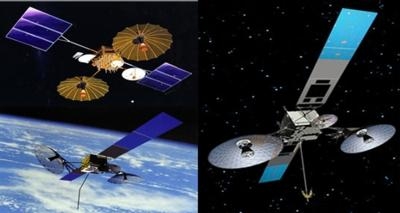Technology Based On New Standards To Enable Functional Changes Via Software
NASA's Space Communications and Navigation (SCaN) test bed has begun its experiments after completing its checkout on the International Space Station. The SCaN test bed is an advanced, integrated communications laboratory facility that uses a new generation of software-defined radio (SDR) technology to allow researchers to develop, test and demonstrate advanced communications, networking and navigation technologies in space. This radio communication technology is based on a new standard that enables radio characteristics and functionality to be changed simply by altering the software. It can be transferred to any radio built to the standard. The cost savings and efficiency of this new technology will improve NASA's data communications in the future.

"The space station serves as a dynamic test bed for the technologies needed for future human and robotic exploration," said International Space Station Program Manager Michael Suffredini. "SCaN is an example of the technologies that are being matured in low-Earth orbit and used to increase science return of many different types of spacecraft."
Checkout activities completed in February established the status and health of the payload, including the antenna systems and software on each of three SDRs. The test bed will help technology developers and mission planners understand how they will be used in future missions. "With the development and deployment of this test bed, NASA has enabled significant future advancements by gaining knowledge and understanding of SDR development," said John Rush, technology and standards director for SCaN at NASA Headquarters in Washington. "That has created expertise across the agency that will define and develop the next generation of SDRs for future missions."
Initial experiments under way include advancing in S-band and Ka-band SDR technology and enhancing the capabilities of the existing communications paths, especially in the Ka-band. Researchers expect the test bed to operate aboard the space station for as long as six years. "The SCaN Test bed represents a significant advancement in SDRs and its applications for NASA," said David Irimies, project manager for the SCaN test bed at NASA's Glenn Research Center in Cleveland. "Investigating these SDR technologies in the dynamic space environment increases their technology readiness level and maturity, which in turn can be used for future missions as risk reduction."

An experiment with NASA's latest Tracking and Data Relay Satellite (TDRS)-K will be the first in-orbit test and demonstration of a TDRS spacecraft acquiring and successfully auto-tracking a Ka-band user in low-Earth orbit. This reconfigurable in-orbit laboratory provides broad participation to NASA, industry, academia and other government agencies. These experiments will contribute data to the Space Telecommunications Radio Standard Compliant repository and will enable future hardware platforms to use common, reusable software modules to reduce development time and costs.
NASA continues to solicit proposals to participate in the development, integration and in-orbit execution of research and technology experiments and demonstrations using the test bed. The first users outside NASA are expected to demonstrate experiments on the SCaN test bed by 2014.
(TDRS image provided by NASA)
 ANN's Daily Aero-Term (05.09.24): Hold Procedure
ANN's Daily Aero-Term (05.09.24): Hold Procedure ANN's Daily Aero-Term (05.06.24): Altitude Readout
ANN's Daily Aero-Term (05.06.24): Altitude Readout ANN's Daily Aero-Linx (05.06.24)
ANN's Daily Aero-Linx (05.06.24) Airborne-NextGen 05.07.24: AI-Piloted F-16, AgEagle, 1st 2 WorldView Sats
Airborne-NextGen 05.07.24: AI-Piloted F-16, AgEagle, 1st 2 WorldView Sats Aero-News: Quote of the Day (05.07.24)
Aero-News: Quote of the Day (05.07.24)




